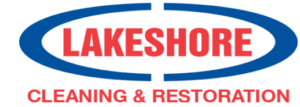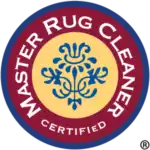
According to a 2011 study conducted by the National Sanitation Foundation, dish sponges are the single germiest place in your entire home. Sponges are the perfect place for bacteria to live, breed, and party it up.
- 86% of sponges tested were identified as having mold or yeast.
- 77% had coliform bacteria, which included the dreaded E. coli.
To clean dish sponges, soak them in water and microwave them which will kill bacteria. You can also run them through the dishwasher on heated dry.
- clean your sponges after each use.
- replace your sponges every two to four weeks.
Many people would guess that the bathroom is the germiest room in your home, but the kitchen is certainly here to give it a run for its money. Kitchen sinks harbor food scraps making them an appealing place for bacteria.
According to the same study by the NSF, kitchen sinks were full of coliform bacteria and mold.
- 45% of sinks tested were positive for coliform.
- 27% were positive for mold.
To clean your kitchen sink, scrub it down with some disinfecting spray and a towel or sponge, preferably an unused sponge. You can plug it and fill it with warm soapy water and bleach.
The third germiest place in your home is your toothbrush holder, with notably larger amounts of mold and yeast than what is found in your kitchen sink. Mouths are germy, and a toothbrush removes food and stuff from your teeth. You rinse your toothbrush but don’t actually clean it with anything other than hot water.
An easy solution is to buy a toothbrush holder that is dishwasher safe and run it through the sanitize cycle on the dishwasher. You can also wash it out with soap and hot water and wipe it down with a disinfecting wipe.
The bathroom faucet handle tested positively for coliform and mold growth. This should be cleaned daily if possible. A simple wipe down with a disinfecting wipe or spray should send those bacteria packing pretty quickly. Three things you touch between using the bathroom and washing your hands are the flush lever on the toilet, the faucet handle, and the soap pump. All of those things are very germy.
Lots of things make their way onto your countertops. Food scraps, water spills, and bags from the grocery store can all be germ couriers that deliver coliform bacteria to the tops of your beautiful marble countertops. Know how to clean your specific type of countertop. Some don’t stand up well to hard chemicals such as bleach, and you’ll need to opt for a soap and water treatment.
The NSF study noted that more than 50% of TV remotes and nearly 60% of video game controllers have measurable populations of yeast and/or mold. They get touched by a lot of different hands and are rarely cleaned. Take time to wipe these handheld devices with a disinfecting wipe, you’ll be glad you did.
Keyboards as the single germiest “personal item” in your home.
- 68% of keyboards tested in the study had yeast and mold on them.
- That is a higher percentage than your toilet seat, kitchen sink, bathroom doorknob, and almost every other thing tested.
A can of compressed air will help blow out debris that gets caught within the keys. You can disinfect with a standard disinfecting wipe. Just be careful not to allow any moisture to seep under the keys, especially if you are using a laptop.
Pet toys and bowls can be full of gross bacteria including dangerous infectious types like staph bacteria You should clean your dog’s bowl regularly. Scrubbing with soapy water is really all that is necessary. Clean rubber chewable pet toys with soap and water weekly. Soft toys can be run through your washing machine’s sanitize cycle.
Lakeshore Restoration and Cleaning is in the business of cleaning carpets and flooring and many people ask the question, what are the health benefits of carpet vs. flooring? So, we wrote an article to answer your questions HERE

